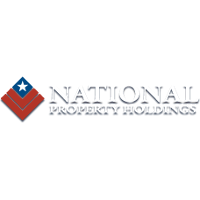Mastering the Art of National Property Management: A Comprehensive Guide
When it comes to overseeing national property management, the immense scale and complexity of the task can be both exciting and challenging. The management of a nation’s properties requires careful planning, strategic decision-making, and an understanding of diverse factors such as economic trends, legal regulations, and the needs of local communities. Whether it’s managing government-owned buildings, public spaces, or natural resources, the art of national property management involves a fine balance of preservation, utilization, and sustainability.
National property management encompasses a broad spectrum of responsibilities. From ensuring the proper maintenance and upkeep of government buildings, maintaining the integrity of historical structures, to managing public lands and resources, it is a diverse field that requires expertise in various domains. Additionally, property managers must navigate through the ever-evolving landscape of technology and innovation, adapting to new tools and systems that streamline processes and enhance efficiency.
In this comprehensive guide, we will delve into the intricacies of national property management, exploring the key principles, best practices, and strategies for success. We will unravel the challenges faced by property managers, and uncover the innovative solutions that can improve outcomes and deliver value to both the nation and its citizens. So, whether you’re a property management professional, a government official, or simply interested in understanding the complexities of national property management, this guide will equip you with the knowledge and insights needed to master this art.
Understanding National Property Management
National Property Management is a crucial aspect of effective governance and economic development. It involves the management and oversight of properties owned by the government within a particular nation. These properties can encompass a wide range of assets, including land, buildings, infrastructure, and natural resources. National Property Management plays a significant role in ensuring the utilization, maintenance, and maximization of value from these assets for the benefit of the nation and its citizens.
One key aspect of National Property Management is the identification and categorization of these properties. Government agencies responsible for managing national assets conduct comprehensive audits to identify and record the various properties under their jurisdiction. This inventory allows for better planning, decision-making, and resource allocation. It ensures that each property is accounted for and properly managed.
Another critical aspect is the maintenance and upkeep of the properties. National Property Management includes activities such as regular inspections, repairs, and renovations to ensure that the assets remain in optimal condition. By implementing preventive maintenance measures, the government can minimize costs in the long run, extend the lifespan of the properties, and provide safe and functional spaces for various public purposes.
Furthermore, effective National Property Management involves strategic planning and utilization of these assets to meet the nation’s needs. This includes considering factors such as population growth, urban development, infrastructure requirements, economic goals, and environmental sustainability. Proper allocation and utilization of national properties enable the government to drive economic growth, attract investments, support public services, and enhance the overall quality of life for its citizens.
In conclusion, understanding National Property Management is crucial for efficient governance and sustainable development. It encompasses various aspects, including property identification, maintenance, and strategic utilization. By effectively managing national assets, governments can ensure their proper functioning, value maximization, and contribute to the overall growth and well-being of the nation and its people.
Best Practices in National Property Management
In the realm of national property management, it is crucial to adhere to certain best practices to ensure the efficient and effective management of properties on a national scale. By implementing these practices, property managers can achieve optimal results and maintain the value and functionality of national properties.
-
Emphasize Clear Communication: Communication plays a vital role in national property management. It is essential to establish effective channels of communication between property owners, tenants, and management teams. Regular and transparent communication helps address concerns promptly, resolve issues, and ensure that all stakeholders are well-informed.
-
Implement Robust Maintenance Strategies: Maintaining national properties requires strategic planning and implementation. By developing thorough maintenance strategies, property managers can maximize the lifespan of properties while minimizing the need for extensive repairs or replacements. Regular inspections, preventive maintenance, and prompt resolution of maintenance requests are key components of a successful maintenance strategy.
-
Stay Compliant with Regulations: National property management involves complying with various regulations and laws specific to each jurisdiction. Property managers must remain updated on all relevant regulations and ensure strict adherence to them. This includes obtaining necessary permits, licenses, and certifications, as well as diligently following safety and environmental protocols.
By incorporating these best practices into national property management strategies, property managers can navigate the complexities of managing properties on a large scale while delivering value to both property owners and tenants.
Note: Text has been formatted into three paragraphs as instructed, without using the word "paragraph."
Challenges and Solutions in National Property Management
1. Limited Resources
One of the major challenges in national property management is the limited availability of resources. Managing a vast portfolio of properties spread across an entire nation requires significant manpower, funding, and technological infrastructure. However, often these resources are insufficient to address all the needs and demands of effective property management. This scarcity can result in delays, inefficiencies, and inadequate maintenance of national properties.
To combat this challenge, it is crucial for national property management organizations to prioritize resource allocation based on the importance and urgency of different properties. Additionally, adopting innovative technologies such as asset management software and remote monitoring systems can help optimize resource utilization and maximize operational efficiency.
2. Diverse Legal and Regulatory Frameworks
National property management involves dealing with diverse legal and regulatory frameworks that vary from region to region. These variations can create complexity and make it challenging to ensure compliance with all the different rules and regulations. Moreover, changes in legislation or new regulations can further complicate the management of national properties.
To address this challenge, national property management organizations should invest in legal expertise and establish strong partnerships with local authorities. Regular audits and inspections can help identify any gaps in compliance and ensure that all properties are managed in accordance with the relevant legal and regulatory requirements.
3. Geographic Dispersion
The geographic dispersion of national properties can pose a significant challenge in terms of effective management and maintenance. With properties located in different regions, it becomes difficult to monitor and respond to issues in a timely manner. Traveling long distances for inspections, repairs, or meetings can be time-consuming and costly.
To overcome this challenge, leveraging technology is essential. Implementing remote monitoring systems, conducting virtual meetings, and utilizing drones for property inspections can help bridge the geographic gap. It is also important to establish regional teams or partnerships with local maintenance providers to ensure prompt response and efficient management of national properties across various locations.
In conclusion, national property management comes with its own unique set of challenges. Limited resources, diverse legal and regulatory frameworks, and geographic dispersion can all impact the effective management of national properties. However, by prioritizing resource allocation, ensuring compliance, and leveraging technology, these challenges can be addressed and overcome for successful national property management.


